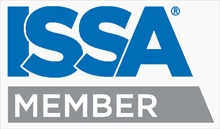Floor Care Focus: Fragile Floors
Traditionally, vinyl composition tile (VCT) has been the most common flooring material used for all types of floors in all types of facilities. However, recent trends, such as sustainability initiatives and design appeals, have brought on the more frequent use of alternative, fragile floor materials. Some of these new materials are easy to damage, and extra care must be taken when caring for these types of floors.
Bamboo
Bamboo is sometimes referred to as “the other hardwood,” and has been used in construction in some parts of the world for a long time. In commercial flooring, bamboo is not usually the best choice. Bamboo does not stand up well to foot traffic, especially high-heels. And once a bamboo floor is damaged, it cannot be repaired without reinstallation. Bamboo is not thick enough to sand down to expose a new and fresh layer. Since bamboo cannot be repaired, the best thing to do is to prevent any damage by keeping it clean. The best way to clean bamboo is to use a microfiber mop with a small amount of cleaning chemical. Only neutral floor cleaners should be used, and care should be taken to properly dilute and to apply only a small amount of moisture to the floor.
Cork
Cork is a rapidly renewable wood product, which has drawn more interest in recent years as a flooring material. Compared to other flooring materials, cork is much softer and quieter, and also does not stand up well to moisture. Due to the softness of the cork, floor finish should not be applied to the floor as it can easily crack under normal traffic. If moisture gets underneath the cork flooring, it can cause warping and lifting up. A factory coating is often applied to cork, but once it is worn off it is very difficult to repair. Similar to bamboo, proper care should include a microfiber mop, a small amount of cleaning chemical, and a neutral cleaner.
Linoleum
Linoleum is a flooring material that was once very popular, went away, and is now becoming more popular again. This is a favorite in health care and educational facilities. Proper care is key with linoleum floors. Floor finish can be applied, although sometimes a factory coating is applied. High pH cleaners and strippers should be avoided, as they can cause irreversible damage and color removal. A neutral cleaner and a very mild pad (a red cleaning pad) should be used. Unlike the previous materials, properly installed linoleum should be watertight.
Laminates
Laminates can come with many different appearance, looking like hardwood, stone, vinyl, or others. They can contain wood pieces and particles, vinyl, and other components that are layered together to give strength to the product. Aggressive pads and products can irreversibly damage laminates, because once the top layer is scratched or damaged, there is no way to repair it. The surface of the laminate is usually very thin and cannot be sanded down to repair. Again, a neutral cleaner and mild pad is the best option for maintaining laminates.
 It is important to remember when caring for a fragile floor that the key is to prevent soils from entering onto the floor. This is done with a combination of a good matting program and proper cleaning. Start with adequate walk-off matting at all entrances to prevent soils from entering the facility. To remove dirt from the floor, vacuuming with an appropriate floor tool is a good option. Follow up with mopping with a neutral cleaner, like Multi-Clean’s Century Maintenance. Always avoid aggressive cleaning procedures and follow manufacturer’s procedures if possible.
It is important to remember when caring for a fragile floor that the key is to prevent soils from entering onto the floor. This is done with a combination of a good matting program and proper cleaning. Start with adequate walk-off matting at all entrances to prevent soils from entering the facility. To remove dirt from the floor, vacuuming with an appropriate floor tool is a good option. Follow up with mopping with a neutral cleaner, like Multi-Clean’s Century Maintenance. Always avoid aggressive cleaning procedures and follow manufacturer’s procedures if possible.
For more information on floor care products and procedures, check out Multi-Clean’s Floor Care webpage.


